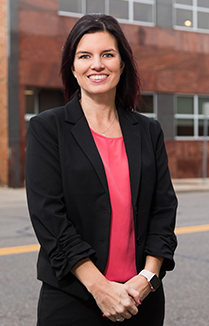 The home foreclosure “crisis” passed from the headlines a number of years ago. But many Minnesota families still struggle with this issue. Largely, that’s because the Gopher State has one of the fastest foreclosure timelines in the country. After just one missed payment, the bank could take your house in only a few months.
The home foreclosure “crisis” passed from the headlines a number of years ago. But many Minnesota families still struggle with this issue. Largely, that’s because the Gopher State has one of the fastest foreclosure timelines in the country. After just one missed payment, the bank could take your house in only a few months.
Some people in this situation hire lawyers, go to court, and file restraining orders against the mortgage companies. That legal maneuver does not have a negative impact on a credit score. But in all but the most extreme cases, such as a fraudulent home inspection report, a restraining order only delays the inevitable, at best.
Bankruptcy, on the other hand, can save your house. It both prevents foreclosure and provides long-term solutions.
How Bankruptcy Stops Foreclosure in Minnesota
A restraining order is only an emergency, last-ditch stopgap. Furthermore, it’s optional. Minnesota judges only grant them if the plaintiffs produce very strong evidence. On the other hand, bankruptcy’s automatic stay is not optional. Generally, it takes effect as soon as debtors file their voluntary petitions and stays in effect for the duration of the case. They do not have to present any evidence; they simply have to press “send.”
Section 362 – the provision in the bankruptcy code that contains the automatic stay - is so hard to overcome that most moneylenders do not even try. If the bank does go to court, it must essentially convince the judge that the homeowner will either destroy the house out of spite unless the bank forecloses, or that the debtors have no intention of making their mortgage payments. Rather predictably, the evidence almost never supports such a wild accusation.
The automatic stay does more than prevent foreclosure. It prevents any other adverse action as well. That could be extreme actions like repossession or lawsuits. The automatic stay also applies to lower-intensity activities, like harassing phone calls. It also stops both voluntary and involuntary wage garnishment, in most cases. So, if you pay bills through ACH debits, you may need to make alternative arrangements.
The Protected Repayment Period in Minnesota
If moneylenders allow repayment, it’s usually according to the terms they dictate. But Chapter 13 repayment works differently. The repayment schedule is almost entirely income based.
Basically, the trustee (person who oversees the bankruptcy payment plan) puts Chapter 13 debtors on allowances. After they take care of minimum monthly expenses, their disposable income goes toward repayment. Chapter 13 debtors have up to five years to catch up on home mortgage obligations and other secured debts.
Once again, the moneylender can object to the repayment terms. But as long as the numbers work out, judges hardly ever side with moneylenders in these cases.
How Can Bankruptcy Lower My House Payment?
Most people would be extremely content with a federally-guaranteed repayment program that both stops foreclosure and gives up to five years of breathing room. But in many cases, there’s more.
Houses do not always increase in value. In fact, sometimes they depreciate sharply. Many Minneapolis homeowners have experienced this phenomenon recently. It’s almost impossible to refinance and underwater mortgage. Making matters worse, many of these homeowners borrowed money against future home equity, and now those bills are coming due.
The Chapter 13 strip-off may be available in these cases. Assume David Debtor bought his Minneapolis home for $250,000 and he later took out a $50,000 HELOC (home equity line of credit). His house is now worth only $200,000. If he files Chapter 13, the judge may strip off the $50,000 HELOC, because the home’s value is too low to secure the first and second mortgages. David still owes the money, but it’s now a dischargeable unsecured debt.
Further assume that David asked the mortgage company for a loan modification. But, the bank repeatedly denied his application based on minute technicalities. After David files bankruptcy, the judge will probably send the dispute to mediation. There, the moneylender has an obligation to negotiate in good faith. That means the denial must be based on something substantive, and not a half-point on an internal debt-to-income ratio score.
Kain & Scott offers free credit repair to all our bankruptcy clients, and not just homeowners. Therefore, you can recover from bankruptcy even more quickly.
Bankruptcy can both save your home and help you stay in it for years to come. For a free consultation with an experienced bankruptcy attorney in Minneapolis, contact Kain & Scott. We are one of the highest-rated bankruptcy law firms in the Twin Cities area.



